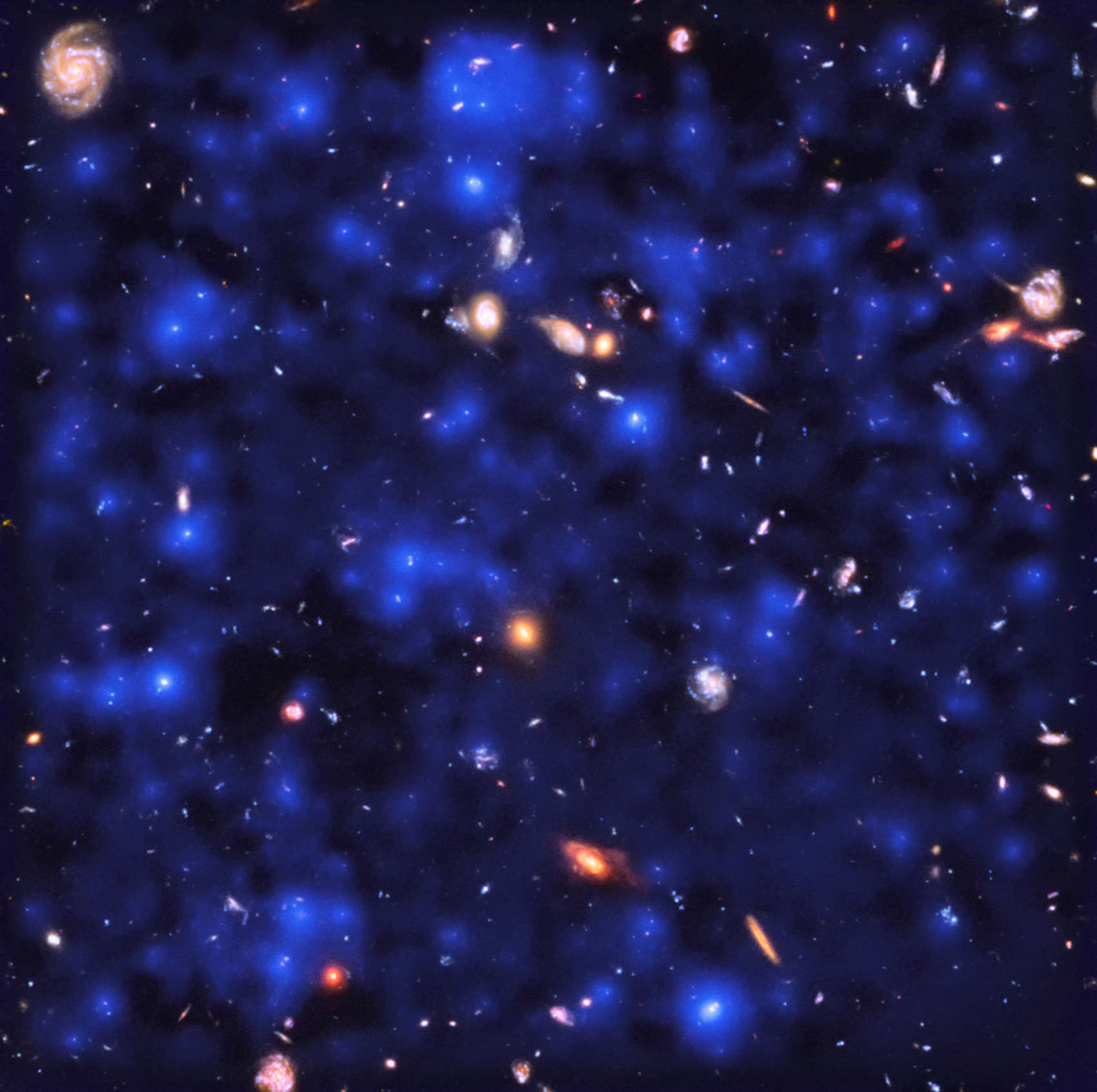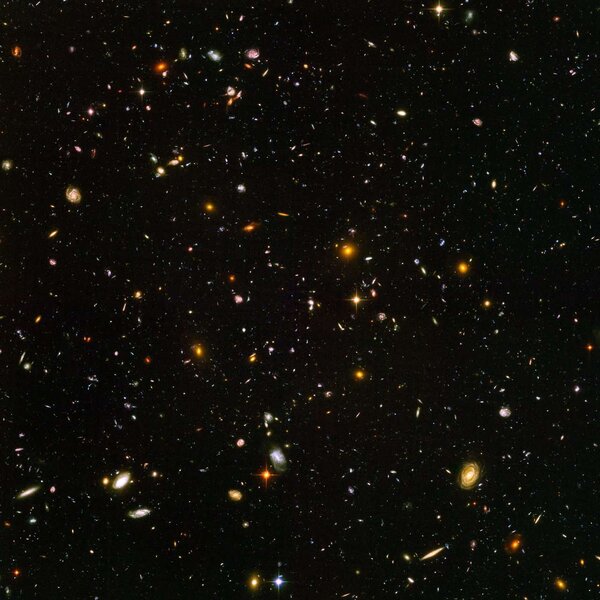Create a free profile to get unlimited access to exclusive videos, sweepstakes, and more!
The *entire* sky glows from the light of distant hydrogen. All of it, everywhere.

To a large extent, most of the Universe is hydrogen.
It's the simplest element, just a proton and an electron (and honestly, the electron is optional), and it came out of the fires of the Big Bang. Roughly 75% of the non-dark Universe is hydrogen by mass, with 25% being helium, and the tiny remainder is everything else, basically a roundoff error.
A lot of this hydrogen is bound up in stars like the Sun, but a huge amount is also in the form of gas inside and surrounding galaxies. It's a bit hard to detect because it's faint, but also because when hydrogen gas is warmed to about 10,000°C — as it is in many locations, like around galaxies — it glows in the ultraviolet. That's absorbed by Earth's atmosphere, making it hard to see.
Astronomers figured out a way around this limitation, though, and were able to map out the extremely faint glow of hydrogen around distant galaxies. What they found was startling: That glow is everywhere.
I mean that literally. Everywhere. There isn't a spot on the sky you can point at and say, "Nope, no hydrogen there." It covers the entire firmament.
They found this gas by being clever. The Universe is expanding, and the farther away you look the faster it appears to be moving away from you. If you look at just the right distance range, that ultraviolet glow from warm hydrogen redshifts into the visible light range, where it can be seen from the ground.
So astronomers turned to the Hubble Ultra Deep Field, an extraordinary patch of sky in the constellation of Fornax, where Hubble spent 270 total hours just staring, recording the incredibly faint light of distant galaxies. They pointed the aptly named Very Large Telescope (an 8.2-meter behemoth) at that same part of the sky, and observed it with a camera called the Multi-Unit Spectroscopic Explorer, or MUSE. This can not only take images, but it can separate out the colors of light hitting each pixel in that image, looking just for that glow of hydrogen.
What they saw is amazing: The glow is everywhere in the image. It gets brighter around the galaxies, as expected, but it also shows up in patches where Hubble only faintly saw a galaxy, or even where Hubble saw nothing at all. That would be from galaxies so small and faint even the orbiting observatory couldn't spot them… but they betrayed their presence by their hydrogen.
The glow in the MUSE observations is emitted by gas from 11.5 to 12.8 billion light years from us — at those distances the universal expansion drops the ultraviolet hydrogen emission into visible light. Looking at the data, the astronomers set a lower limit to their observations, basically how deep they could see and still keep the detector noise to reasonable levels, and found the glow covered half the sky in their images. Dropping the limit a bit more upped the coverage to 85%.
Extrapolating, they found that the entire image was glowing with the light of hydrogen, and in some spots coverage was actually higher than 100% — meaning the sources of hydrogen were overlapping; the clouds are so big in extent that they were seeing through one cloud to another in the background. And that, in turn, means the entire sky glows with the light of hydrogen.
That's astonishing.
It's also a lovely addendum to the Ultra Deep Field itself. Hubble has taken several Deep Fields, and in each it looked at a relatively "empty” part of the sky and saw it filled with galaxies. Mind you, the area of the Ultra Deep Field on the sky is about the same as a tiny grain of sand held at arm's length… but in it Hubble saw ten thousand galaxies. And honestly there are many more, since an unknown number would be too faint for it to spot.
But their hydrogen glows too, and we've seen that.
The question now is, what is causing this hydrogen to glow? The authors posit it might be due to the cosmic ultraviolet background, a diffuse glow of UV light seen all across the sky. The sources of that are something of a mystery, too. Turtles all the way down, it seems.
That the Universe for you: Enigmas wrapped in puzzles. But we're getting really good at unwrapping them. Especially when they write their message over literally the entire sky.
















